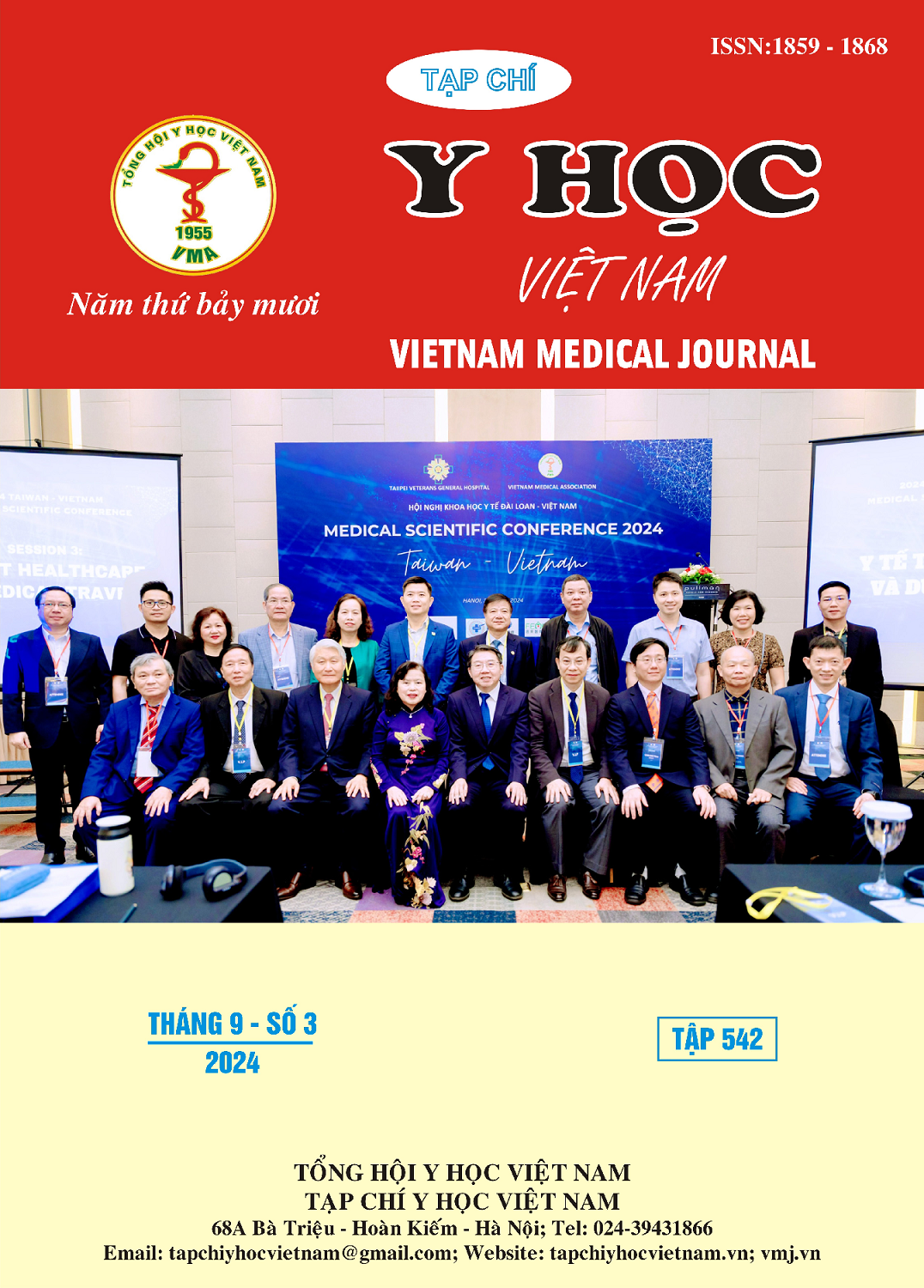THE RELATIONSHIP BETWEEN THYROGLOBULIN DOUBLINGE TIME AND RECURRENCE/METASTASES IN PATIENTS WITH DIFFERENTIATED THYROID CANCER POST THERAPY
Main Article Content
Abstract
Objectives: The aim of this study was to evaluate the relationship between thyroglobulin double time and recurrence/metastatic lesions in patients with differentiated thyroid cancer after treatment. Methods: 151 patients underwent thyroidectomy and I-131 treatment in department of nuclear medicine, Hospital 108 from 2018 to 2/2024. After treatment, recurrence and metastases were detected in lesions that appear when disease-free for at least 6 months or in new lesions. At least two consecutive Tg measurements under the thyroid hormone replacement therapy (TSH ≤ 0,5 uIU/ml) to calculate TgDT before progression. We analyzed the relationship between clinical characteristics, histopathologic type, metastases and TgDT. Results: The median of TgDT is 29.3 months. The age group 55 and older has a lower TgDT than the group under 55. In looking for a relationship between histopathology and TgDT, the study seems to show that TgDT in the follicular cancer group is lower than the papillary group (p=0,048). There is a statistically significant relationship between TgDT and distant metastasis (p<0,001). Subgroup analysis also showed that the bone metastasis group had a lower TgDT time than the lung metastasis and mediastinal metastasis groups (p<0.05). Conclusion: TgDT has a statistically significant association with recurrence and metastasis in patients with differentiated thyroid cancer after treatment.
Article Details
Keywords
thyroglobulin, thyroglobulin doubling time, differentiated thyroid carcinoma, recurrence /metastatic.
References
2. Cooper, D.S., et al., Revised American Thyroid Association management guidelines for patients with thyroid nodules and differentiated thyroid cancer. Thyroid, 2009. 19(11): p. 1167-214.
3. Miyauchi, A., et al., Prognostic impact of serum thyroglobulin doubling-time under thyrotropin suppression in patients with papillary thyroid carcinoma who underwent total thyroidectomy. 2011. 21(7): p. 707-716.
4. Ahuja, A.T., et al., Ultrasound of malignant cervical lymph nodes. Cancer Imaging, 2008. 8(1): p. 48-56.
5. Ko, M.S., et al., Normal and abnormal sonographic findings at the thyroidectomy sites in postoperative patients with thyroid malignancy. AJR Am J Roentgenol, 2010. 194(6): p. 1596-609
6. Shammas, A., et al., 18F-FDG PET/CT in patients with suspected recurrent or metastatic well-differentiated thyroid cancer. J Nucl Med, 2007. 48(2): p. 221-6.
7. Atkins F.B and V.N. D, Radioiodine Whole Body Imaging. Thyroid Cancer: A Comprehensive Guide to Clinical Management. Humana Press, Totowa, NJ, 2006: p. 133–150.
8. Rössing, R.M., et al., Serum thyroglobulin doubling time in progressive thyroid cancer. 2016. 26(12): p. 1712-1718.
9. Liu Z, Chen S, Huang Y, Hu D, Zeng W, Wang M, Zhou W, Chen D, Feng H, Wei W, Zhang C, Zhou L, Guo L. Synergic effects of histology subtype, tumor size, and lymph node metastasis on distant metastasis in differentiated thyroid cancer. Ann Transl Med 2019;7(20):533.
10. Franssila KO. Is the differentiation between papillary and follicular thyroid carcinoma valid? Cancer 1973;32:853-64. [Crossref] [PubMed]


